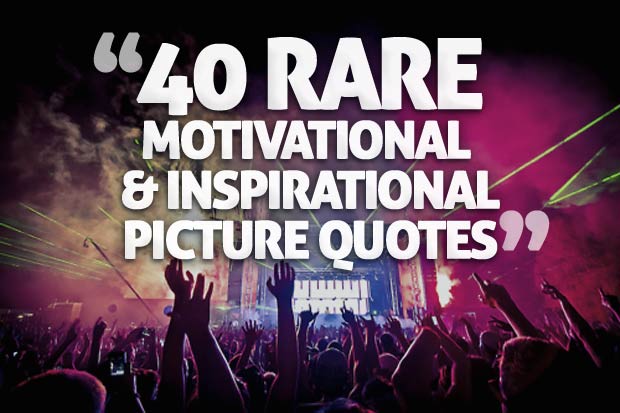Life
Why Remembering You’re Going to Die Will Wake You Up

I lost it. I was at the cemetery yet again —reading the legacies of those who have left this experience. As I wandered around on a beautiful California morning, I’d come across a section where children lay to rest. Anywhere from a few days to a few years, I’d read their tombstones of the legacies they were able to create in a short time: joy, passion, love and wonder.
I wasn’t there to visit anyone in particular, I was there to wake up. Remembering we’re all going to die is a beautiful way to create clarity and make committed decisions now. I never see this as negative, I see it as an incredible opportunity to step into our greatness, instead of putting it off until next month, year or decade.
In this post, I’ll share 5 reasons as to why it’s important to do what you desire and create a life you can’t wait to wake up for:
1. On The Shortness Of Life
One of my favorite texts of all time comes from Seneca, a stoic philosopher who lived 2,000 years ago. And yet, this essay drives a crucial point home: we all have enough time, if we do it right. But often, we don’t. We put our dreams on hold to seek approval from others, we buy into the mentality of “someday” and end up living a life of regret and what could have beens.
We waste our time with mindless entertainment, gossip and caring way too much about what others think. We take the path others have told us is for us, but deep down we know the truth: it’s not.
So, how can you use your mortality to make bold decisions and live the life you’re called to right now? If you’re here, I know this isn’t you.
“Often a very old man has no other proof of his long life than his age.” – Seneca
2. Remember Your Mortality
The first step in harnessing the power of remembering we don’t have much time is simply to embrace our mortality. This simple shift in awareness is what 99% of people avoid: we know our time here is limited, but we rarely think about it.
Usually, this happens until someone around us experiences a crisis or death and wakes us up. Most people live in an illusion that death is very far off and likely won’t happen to them. But it’s not true. According to research by the United Nations, around 6,500 people die every day in the U.S. alone.
Instead of running from our mortality, face it head on and use it as leverage to ask bold questions:
- What do you really want?
- Who are you living for?
- Are you living the life you’re meant for?
As Steve Jobs famously said in his riveting Stanford commencement speech in 2005: “remembering that I’ll be dead soon is the most important tool I’ve ever encountered to help me make the big choices in life.” Every day, take a moment to remember your time here is limited and you have a precious gift. Close your eyes, express gratitude and ensure you set the intention to truly live.
3. Use Reverse Visualization
One of my favorite techniques I use on myself and countless clients or listeners of the podcast is simple: reverse visualization.
We’ve all heard of visualization for success, and it’s a key practice to shift our awareness and gain clarity. But reverse visualization is strategically used to make bold decisions now by leveraging the possibility of regret.
Because most people are slow to make decisions, they miss out on the opportunity cost of a life they can’t imagine. They end up stuck in life, and justify it by saying: “I’ll get around to it next year. When life gets a little less hectic, I’m all in. Someday I’ll launch my own business.”
These are all lies designed to let you and I off the hook from making a committed decision from a place of power.
Pick an area of your life that isn’t working for you and ask a simple question: What does it feel like to wake up in 18 or 36 months when nothing has changed, except your circumstances are much, much worse? Dig deep into that reality —and the ripple effect it causes on every area of your life.
“I would visualize things coming to me. It would just make me feel better. Visualization works if you work hard. That’s the thing. You can’t just visualize and go eat a sandwich.” – Jim Carrey
4. Spend Time With Older People
One of my favorite practices for remembering my own mortality is to have conversations with people in their 70’s, 80’s and 90’s. Undoubtedly, they have the deep wisdom of experience, and have shifted my life countless times.
When I was 24 and on the path to become a financial broker, a 64 year old man looked me in the eye and told me to follow my heart. I could see and feel the regret in this eyes. He had spent his entire life chasing something he didn’t want.
Bronnie Ware was a caretaker for those with little to no time to live, and would have conversations about their biggest regret. She ultimately created a book and platform out of it, compiling the most common themes. Number one was:“I wish I’d had the courage to live a life true to myself, not the life others expected of me.”
So, ask yourself: are you on a path designed by others —or one of your choosing? Regardless of the success you create, you’ll feel empty if it’s not truly yours.
5. It’s Your Time
Remembering we’re not here for long is a brilliant way to focus on what matters and release the noise. It’s about living a life on your terms, and not following a path simply because someone said you should. With this reminder in hand, it’s time to go out and make sure you’re living out loud, and never look back with regret.
How do you make sure you’re taking advantage of every single day you’re alive? Let us know how you express gratitude!
Life
Imposter Syndrome Is Rooted in Your Past But Here’s How You Can Rewire It
Imposter syndrome is most prevalent in highly successful women

Imposter syndrome is “the persistent inability to believe that one’s success is deserved or has been legitimately achieved as a result of one’s own efforts or skills.” (more…)
Life
The Surprising Mental Health Tool You Probably Haven’t Tried
Through journaling, I arrived at a more balanced perspective, it reinstated my sense of gratitude and led me to accept my disability

In two particularly difficult times in my adult life, my journaling practice is helping me heal emotionally. It has been a vital tool for helping me see the bigger picture and land in a place of gratitude. (more…)
Life
How to Stop Comparing Yourself to Others and Find True Happiness
Comparison is the thief of joy; it robs us of our happiness, self-esteem, and peace of mind

In today’s hyperconnected world, it’s easier than ever to fall into the trap of comparing ourselves to others. Social media platforms like Instagram, Facebook, and LinkedIn constantly bombard us with curated highlights of other people’s lives, making it seem like everyone else is happier, more successful, and more fulfilled than we are. (more…)
Life
Harness the ‘Battery Effect’ to Transform Life’s Tensions into Your Greatest Strength
Recharge your life batteries by shifting your mindset today

I believe our life capacity is determined by the skillsets we develop on this spinning rock we call Earth. By “life capacity,” I mean our ability to embrace and sustain joy. (more…)
-

 Success Advice4 weeks ago
Success Advice4 weeks agoThe One Mindset Shift That Made Me Irreplaceable At Work
-

 Did You Know3 weeks ago
Did You Know3 weeks ago7 Surprising Life Lessons Video Games Taught Me That School Never Did
-

 Success Advice4 weeks ago
Success Advice4 weeks agoHow Playing by the Rules Became the Smartest Business Strategy
-

 Success Advice3 weeks ago
Success Advice3 weeks agoHow to Build Trust, Kill Micromanagement, and Lead a Team That Thrives
-

 Scale Your Business3 weeks ago
Scale Your Business3 weeks agoHow to Build a Workplace People Actually Want to Show Up To
-

 Success Advice2 weeks ago
Success Advice2 weeks agoSuccess Isn’t Sexy: 5 Daily Habits That Actually Work
-

 Scale Your Business3 weeks ago
Scale Your Business3 weeks agoHow Smart Entrepreneurs Cut Financial Chaos in Half with One Simple Switch
-

 Success Advice2 weeks ago
Success Advice2 weeks agoBreaking the Bias: How Females Can Thrive In The Workplace in 2025






























4 Comments